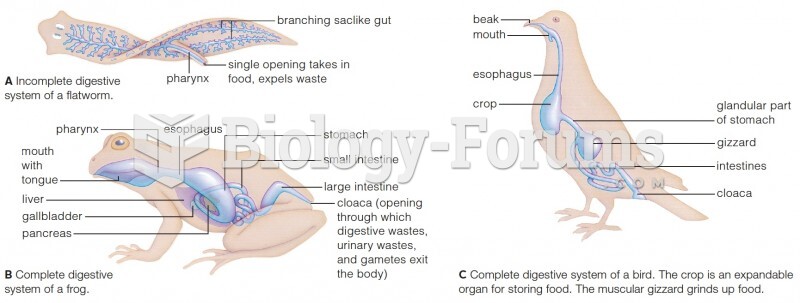Answer to Question 1
The energy derived from food is not used directly by the cells. It is first transformed into adenosine triphosphate (ATP). The subsequent breakdown of this compound provides the energy used by all energy-requiring processes of the body. ATP must be recycled continually to sustain life and work. ATP can be resynthesized in three ways:
1 . ATP-CP system. Weight lifting is an all-out activity and uses the ATP-CP system. The body stores small amounts of ATP and creatine phosphate (CP). The amount of stored ATP provides energy for just 1 or 2 seconds. During brief all-out efforts, ATP is resynthesized from CP, another high-energy phosphate compound. This is the ATP-CP, or phosphagen, system. Depending on the amount of physical training, the concentration of CP stored in cells is sufficient to allow maximum exertion for up to 10 seconds. Once the CP stores are depleted, the person is forced to slow down or rest to allow ATP to form through anaerobic and aerobic pathways.
2 . Anaerobic or lactic acid system. A 200-meter run by a trained runner is a maximal-intensity exercise that is sustained for 10 to 180 seconds. In this situation, ATP is replenished from the breakdown of glucose through a series of chemical reactions that do not require oxygen (hence anaerobic). In the process, though, lactic acid is produced. As lactic acid accumulates, it leads to muscular fatigue. Because of the accumulation of lactic acid with high-intensity exercise, the formation of ATP during anaerobic activities is limited to about three minutes. A recovery period is necessary to allow for the removal of lactic acid. Formation of ATP through the anaerobic system requires glucose (carbohydrates).
3 . Aerobic system. A marathon is a long-distance run. The production of energy during slow-sustained exercise is derived primarily through aerobic metabolism. Glucose (carbohydrates), fatty acids (fat), and oxygen (hence aerobic) are required to form ATP using this process; and under steady-state exercise conditions, lactic acid accumulation is minimal. Because oxygen is required, a person's capacity to utilize oxygen is crucial for successful athletic performance in aerobic events. The higher one's maximal oxygen uptake (VO2max), the greater one's capacity to generate ATP through the aerobic systemand the better the athletic performance in long-distance events.
Answer to Question 2
The Mediterranean diet focuses on minimally processed (whole) foods. It features an abundance of fresh fruits and vegetables, olive oil, whole grains, and legumes; includes, in moderation, fish, red wine, nuts, and dairy products (mostly yogurt and cheese); and limits sweets, refined carbohydrates, sodium, and red and processed meats. Although it is a semi-vegetarian diet, up to 40 percent of the total daily caloric intake may come from fatmostly monounsaturated fat from olive oil. Moderate intake of red wine is included with meals.
More than a diet, the Mediterranean diet is a dietary pattern that has existed for centuries. According to the largest and most comprehensive observational study on this dietary pattern, the health benefits and decreased mortality are not linked to any specific component of the diet (such as olive oil or red wine) but are achieved through the interaction of all the components of the pattern. Those who adhere most closely to the dietary pattern have a lower incidence of heart disease (33 percent) and deaths from cancer (24 percent).
Another study involving more than 120,000 men and women reported an increase in life expectancy of 15.1 and 8.4 years in women and men respectively who followed a combined healthy lifestyle approach: (1) regular physical activity, (2) eating a Mediterranean diet, (3) not smoking, and (4) maintaining healthy body weight.
The Mediterranean diet has also been linked to lower risk for metabolic syndrome and stroke, improved brain health and cognitive function, and lower risk for Alzheimer's disease. Although most people in the United States focus on the olive oil component of the diet, olive oil is used mainly as a means to increase consumption of vegetables because vegetables sauted in oil taste better than steamed vegetables.







